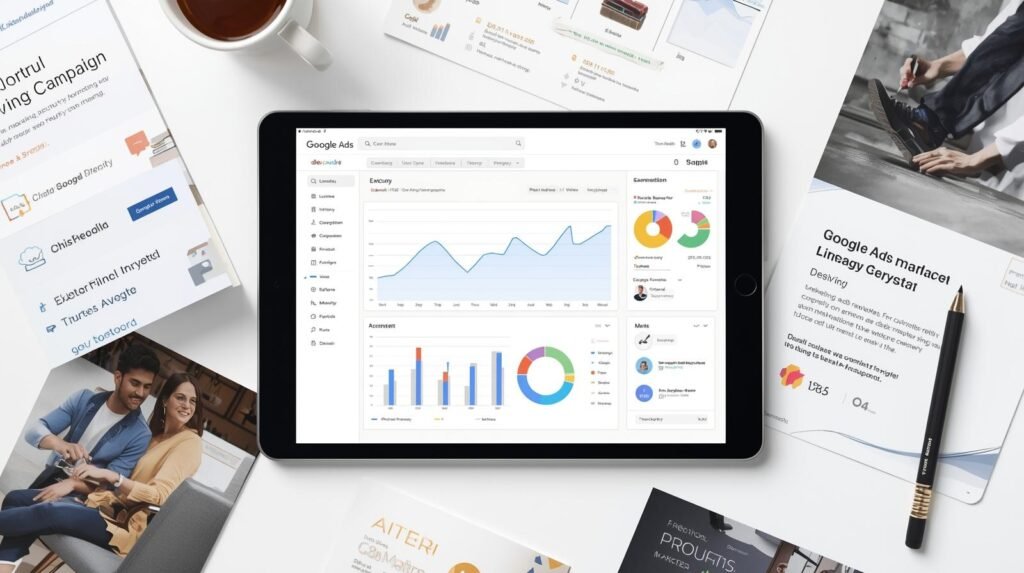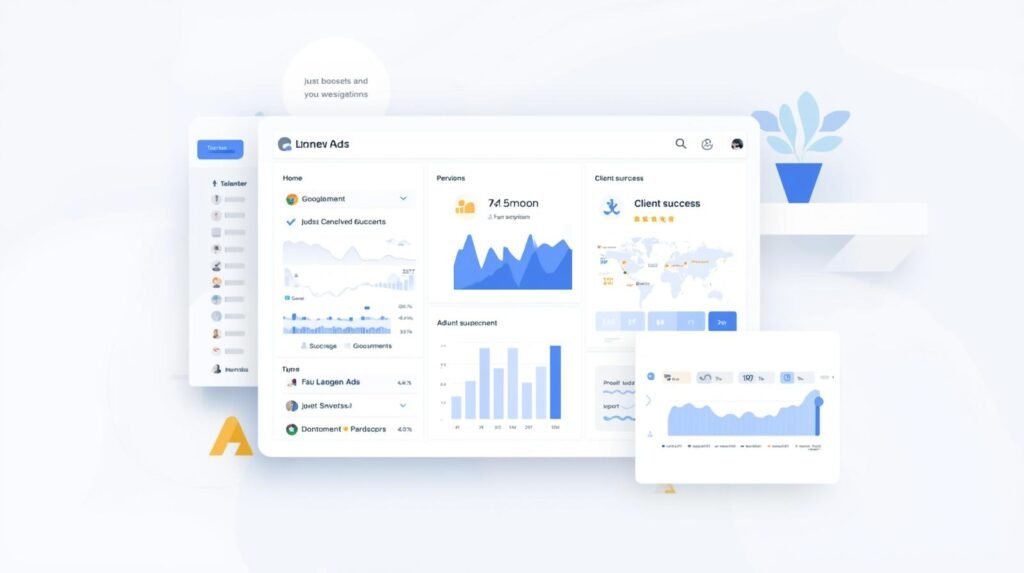Introduction: Why Google Ads Agency Case Studies Matter in 2025
In 2025, Google Ads remains one of the most effective digital marketing tools for businesses of all sizes. But while statistics and promises sound great, what really convinces business owners are case studies—real-world examples showing how an agency has taken another business from mediocre results to scalable growth.
A Google Ads agency case study provides proof of expertise. It demonstrates how campaigns were structured, what challenges were faced, what solutions were implemented, and most importantly, the results achieved. For decision-makers, these case studies serve as powerful trust-builders.
This guide explores:
-
What makes a strong Google Ads agency case study.
-
The process agencies follow to deliver results.
-
Realistic performance benchmarks across industries.
-
Example case studies showing growth in eCommerce, local services, and B2B.
-
Lessons learned and how to apply them to your own campaigns.
By the end, you’ll understand why case studies matter, what to look for when evaluating them, and how agencies use data-driven strategies to achieve measurable outcomes.
What Is a Google Ads Agency Case Study?
A Google Ads agency case study is a detailed success story that outlines how an agency helped a business improve its advertising results. It’s not just about saying “we increased clicks.” Instead, a good case study digs into:
-
The business background and challenges.
-
The goals and KPIs.
-
The campaign strategy and execution.
-
The results (traffic, leads, sales, ROI).
-
Key takeaways for future campaigns.
Why Agencies Use Case Studies
-
Proof of Competence – Shows real client results.
-
Trust-Building – Provides transparency about process and outcomes.
-
Sales Tool – Helps agencies win new clients by demonstrating success.
-
Education – Teaches prospects how strategies work in practice.
A well-written case study bridges the gap between theory and reality, turning abstract strategies into relatable examples.
Anatomy of a Strong Google Ads Agency Case Study
To evaluate whether a case study is meaningful, look for these elements:
1. Client Background
-
Industry, business size, and market conditions.
-
Example: “A mid-sized eCommerce brand selling sportswear in the UK.”
2. Challenges & Pain Points
-
High CPC, low conversion rates, wasted spend, poor ROI.
-
Example: “The client was spending £15,000/month but saw only 1.2x ROAS.”
3. Goals & KPIs
-
Increase ROAS, lower CPA, grow leads, expand into new markets.
4. Strategy
-
Account restructuring.
-
Negative keyword implementation.
-
A/B testing ad creatives.
-
Smart bidding strategies.
5. Execution
-
Campaign segmentation by product/service.
-
Geo-targeting for efficiency.
-
Remarketing to recover lost conversions.
6. Results
-
Data-driven outcomes (clicks, conversions, ROI).
-
Example: “ROAS improved from 1.2x to 4.5x within 90 days.”
7. Key Takeaways
-
Lessons that can be applied to similar businesses.
A case study without data or transparency isn’t a true case study—it’s just marketing fluff.
Example Case Study 1: eCommerce Growth
Client: Mid-sized online furniture retailer in the UK.
Budget: £20,000/month.
Challenge: High CPCs (£3.50 average) and poor ROAS (1.4x).
Goal: Improve ROI and scale revenue.
Strategy:
-
Conducted feed optimisation in Google Merchant Center.
-
Segmented Shopping campaigns by product category.
-
Implemented Performance Max campaigns for cross-network reach.
-
Built remarketing lists for cart abandoners.
Execution:
-
A/B tested product titles and images.
-
Used Target ROAS bidding.
-
Excluded low-margin items from campaigns.
Results:
-
ROAS increased to 4.2x within 90 days.
-
Monthly revenue grew from £28,000 to £84,000.
-
CPC dropped by 22% due to higher Quality Scores.
Key Takeaway:
Product feed optimisation and campaign segmentation are critical in competitive eCommerce niches.

Example Case Study 2: Local Services
Client: Plumbing company serving Greater Manchester.
Budget: £3,000/month.
Challenge: Poor lead quality and wasted spend on irrelevant searches.
Goal: Generate consistent, high-quality leads.
Strategy:
-
Restructured campaigns into tightly themed ad groups.
-
Added over 300 negative keywords.
-
Used location targeting and call-only ads.
Execution:
-
Ran ads during high-intent hours (6am–9pm).
-
Added ad extensions (callouts, sitelinks).
-
Created simple landing pages with click-to-call buttons.
Results:
-
CPA dropped from £120 to £45.
-
Leads tripled (from 25/month to 75/month).
-
Conversion rate improved from 3.2% to 12.6%.
Key Takeaway:
For local services, success often comes from tighter targeting and removing wasted spend.
Example Case Study 3: B2B SaaS
Client: Mid-tier project management software provider.
Budget: £12,000/month.
Challenge: Low lead-to-customer conversion rates, weak brand awareness.
Goal: Generate qualified leads and improve sales pipeline.
Strategy:
-
Built search campaigns targeting high-intent SaaS keywords.
-
Used LinkedIn audience integration with Google Ads for remarketing.
-
Ran video campaigns on YouTube to build awareness.
Execution:
-
A/B tested landing page CTAs.
-
Set up enhanced conversion tracking.
-
Focused budget on free trial sign-ups.
Results:
-
Cost per lead decreased by 40%.
-
Sales-qualified leads (SQLs) increased by 65%.
-
Pipeline revenue grew by £120,000 over six months.
Key Takeaway:
In B2B SaaS, blending awareness campaigns with lead generation creates sustainable growth.
Lessons Learned from Case Studies
-
Account Structure Matters – Poorly organised campaigns waste budget.
-
Negative Keywords Save Money – Cutting irrelevant clicks boosts ROI.
-
Remarketing Is Powerful – Warm audiences convert at higher rates.
-
Landing Pages Drive Conversions – Ads only work if the destination is optimised.
-
Continuous Testing Wins – A/B testing ensures campaigns stay competitive.
Case studies consistently show that smart optimisation beats higher budgets.
Conclusion: Why Google Ads Agency Case Studies Matter
In 2025, hiring a Google Ads agency is often the difference between wasted spend and profitable growth. But rather than taking agencies at their word, smart businesses look at case studies—proof of real-world results.
From eCommerce retailers doubling their ROAS to local service businesses slashing CPA, case studies show how data-driven strategies transform performance. The key is finding an agency that doesn’t just share success stories but demonstrates repeatable processes you can trust.
The bottom line: when evaluating agencies, don’t just ask about pricing or services—ask for case studies. They reveal the expertise, creativity, and problem-solving skills that separate good agencies from great ones.
FAQ
Most frequent questions and answers
No, results vary by industry, budget, and competition. Case studies are examples, not promises.
eCommerce, local services, B2B SaaS, healthcare, finance, and real estate.
Absolutely—many case studies show small businesses achieving big ROI gains.
Reputable agencies provide at least monthly reports, even on budget-friendly plans.
Also, read: –
- Digital Marketing Agency: Expectations vs. Reality
- What are SEO Services and Why Do they Matter?
- Why We Love Google Ads service (And You Should, Too!)
- The Next Big Thing in Digital Marketing Services
- Getting the most out of your Web Design Company UK
- Why Nobody Cares About Domain Name Search
- Meet the Steve Jobs of the Web Design Company


